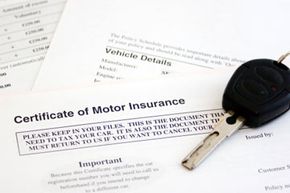Getting a driver's license is a rite of passage for many teens. The promise of the open road, the freedom of mobility without adults -- it's all rather intoxicating. Until your parent or guardian sees the hike on the insurance bill. If you're paying your own driving expenses and you're under a certain age, you're likely shelling out more than your elders for a similar level of coverage.
For most drivers, the "magic age" when your rates go down is 25, just as you've probably heard. But many factors determine your insurance rates, so these age distinctions may not hold for everyone. The secret to decoding insurance rates and premiums lies in understanding where they come from. Understanding how and why rates can change is essential to making sure you've got the best coverage for your unique situation.
Advertisement
All insurance rates arise from complicated sets of data the insurance company has gathered over the decades they've been in business. Every fender-bender, every total loss, every break-in that's ever happened to someone they cover goes into their databases, and what comes out is a picture of you -- or at least who they think you are based on your relevant statistics. The more information a company is able to gather about everybody, then, the more accurately they'll be able to predict what's likely to happen to you and your car -- and that's where the rate comes from.
The good news is that every company does this math a little differently, based on a set of data that's a little different because of their unique base of clients. So shopping around -- and continuing to shop around as part of your yearly routine -- can offer greater differences in premium cost than you might think. In these days of big generic corporations (and generally the same levels of service from all of them), that might sound optimistic -- but it's the truth. Think of it this way: Part of your job as the car's owner is to tune up your insurance as you would your vehicle, especially if you're feeling skeptical.
Advertisement




